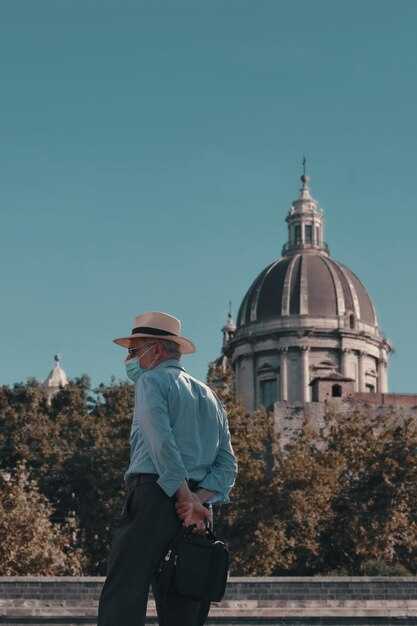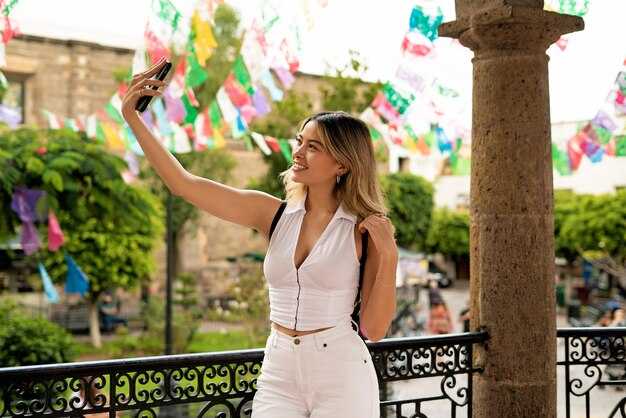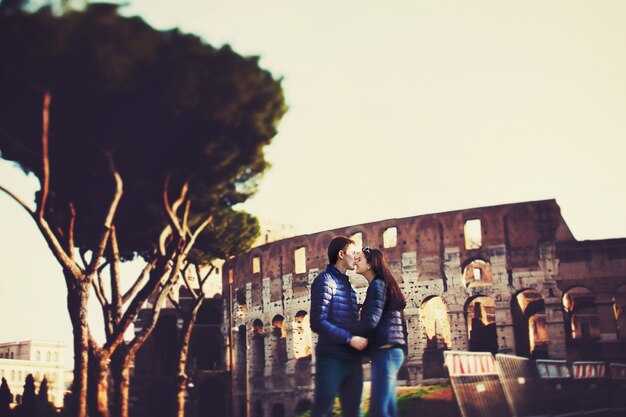
Begin at Plaza de Mayo at dawn to feel the city breathe and map your destination for a day of memory. In the central square, a column of light spills across the Casa Rosada, and the air carries the rich pulse of a town that has welcomed migrants, generals, and dreamers alike.
From there, wander toward the Teatro Colón, where an intricate interior houses frescoes and a history that pioneered modern stagecraft. The building stands on a block that has hosted operas, premieres, and debates since the 19th century, showing how culture and public life shaped the city.
In defensa, San Telmo’s streets run along a long block where a line of houses keep watch over markets and memories. Interested readers peek into the bares along the way, where conversations spill into the evenings. A mural by juan Díaz reveals memories of the port region and the people who kept trade running through the years.
Head to La Boca, where yellow houses line the Caminito and frescoes brighten a memory-rich town that kept its color even as ships shifted the coast. The nearby stadium anchors a living, breathing tradition, while street musicians and dancers keep the rhythm of the port alive.
Interested readers will map a region-wide loop that links Plaza de Mayo, San Telmo, La Boca, and Recoleta–like a compact atlas you can walk. Hoci quick, the route runs through layers of social history and architectural detail that draw the eye to every corner.
A History Lover’s Guide to Buenos Aires: Timeless Landmarks and Hidden Stories; – 5 Manzana De Las Luces
Start your exploration at 5 Manzana De Las Luces by entering through the gate on Defensa Street and dedicating about 40 minutes to trace the jesuítica core: the old Colegio Nacional, the nearby basílica, and the winding lanes that connect these spaces. This is a concrete recommendation to begin here, a must for many visitors.
Within the block, the jesuítica education network shaped regions across argentina and argentinas, serving the elite with schools and a network that linked to missions in Asia; facades and interiors still show painted ceilings and careful stonework that speak to histórico time.
Hidden stories: a cave beneath the street floor is whispered to connect to early Jesuit cellars; tourist guides sometimes include these spaces, and you can see exhibitions and a collection that illuminate the era. Below the cobbles, mayo events and the movement that formed the national memory are hinted in old maps and plaques.
Practical tips: sip coffee at cafes and sample food in nearby places; the 5 Manzana De Las Luces site is designated as a national historic site, so follow access routes and signs. This area suits a tourist who wants to explore urban history on foot and mix with local life.
From 5 Manzana De Las Luces, extend your walk to places along plata’s riverfront and surrounding plazas; the francis legacy appears in street names and plaques, and you will sense how the regions and nations of argentinas define a shared history. The experience invites you to explore the connections between the navy heritage, the early education networks, and the cultural food and arts around the block.
| Site / Aspect | Prečo je to dôležité | What to do | Najlepší čas na návštevu |
|---|---|---|---|
| Old Colegio Nacional | Centerpiece of the jesuítica education network within the block | Walk the arcaded corridors; read plaques; observe painted ceilings | Morning 9:00–12:00 |
| Basílica nearby | 18th-century church with quiet interiors | Admire architecture; look for histórico markers | Midday 12:00–14:00 |
| The cave beneath | Legendary subterranean space linked to early Jesuit cellars | Ask at the desk for guided access if available | Sezónne |
| Exhibitions and collection | Artifacts showing education, missions, and regional links | Review timelines; compare with connections to nations | Afternoon 14:00–17:00 |
Starting Point and Route: Where to begin on Manzana de las Luces

Begin at the Front Plaza and follow the clockwise route to catch the strongest light on granite façades and glimpse the block’s long history in a single walk.
Initial Stop: Front, Exhibits, and Local Life
At the front, the house-like jesuits buildings frame the space. The daily flow of locals passes the central courtyard, and a confitería next door and a pizzería across the street provide a natural break. The cave-like corridor opens into a gallery with displays and exhibits that present a rich, global narrative of the jesuits’ impact on education, urban design, and ecological thinking in the surrounding region. rafael, a local guide, provides a running commentary that notes the notable final panel reveals how the block grew from a school to a living showcase of Buenos Aires life–having played a pivotal part in city culture. If you’re a soccer fan, you may catch a quick game on a nearby court that adds a human touch to the scene.
Route Details: Practical Tips and Final Observations
From the front, you walk toward a second cluster of spaces where granite walls host more displays and a small ecological corner that illustrates adaptation to the city’s climate. The route is compact, sure to deliver a strong sense of place, and the confitería and pizzería offer opportunities to stay and reflect. The final takeaway is that the jesuits’ legacy remains visible in daily life and in the way surrounding streets accommodate visitors. This remarkable segment of Buenos Aires history showcases how global ideas took root in a regional setting.
Key Buildings on the Block: What to look for and why they matter
Begin at the Moreno-Defensa corner and walk a short loop; you’ll spot grand, acclaimed facades, houses, and stores that anchor the neighbourhood. Read the plaques to learn who funded restorations and which presidents or politicians once spoke from the doorway. The block’s layout–fronts facing the street and quiet spaces behind–shows how public life and private life shared the same space, more layers than a single plaque could tell.
What to observe on the facade and the space behind
Look for a consistent rhythm of windows, the height of the cornices, and the transition from stone to brick. A well-preserved corner often marks a historical frontier between eras; the back often hides a small cave-like courtyard used by residents or shopkeepers. The lining of stores tells you about daily life–bakery, bookseller, hardware–each a clue to the block’s economy. Others kept tiny workshops behind the storefronts, a space not visible from the street. When you see a stadium nearby, notice how crowds spilled onto sidewalks and how merchants adapted to the rush.
Reading the people and the power on the block
Identify who lived here or ran the businesses: influential families, a team of artisans, or groups linked to peróns whose letters might still be in archives. The block records a continuum of policy and culture, from early grand style to modern, casual stores. Whether you walk with a notebook or a phone, you will read a story of resilience and change that connects asia-inspired details with local craft, a reminder that every block holds a thread of the city’s wider history, including miní spaces and traces of public life.
Untold Stories: Lesser-known legends and historical moments

Begin at Plaza de Mayo: read the inscriptions on the Cabildo and Casa Rosada and let the stories spill into your map, revealing how the city’s early political life forged a living legacy.
From there, these routes offer opportunities to read original accounts and compare them with living memory. If youre curious, youre about to discover an argentine history beyond the famous names, america’s southern front, and the everyday life of porteños.
-
Jesuits, ships, and hidden chapels
Originally, the Jesuits ran missions along the river and built networks that educated generations. Today, markers along the port stretches hint at those days. In mayo, a small chapel behind a market preserves a living memory and a miní artifact rumored to be part of a clandestine exchange between religious and civic groups. They remind you that history is a collective effort, not a single name, and youre invited to read the plaques and ask locals about these quiet corners; their stories are among the city’s enduring legends.
-
Tichí architekti Májovej revolúcie
Dňa 25. mája 1810 Cabildo Abierto katalyzovalo politický vzostup, ktorý zmenil mesto. Okrem slávnych vodcov, tlačiarov, úradníkov, vojakov a žien formovali rozhodnutie diskusiami v zadných miestnostiach a archivovanými zápismi, ktoré sa neskôr objavili v publikovaných dejinách. Tieto hlasy, pravdepodobne vplyvné, odhaľujú, ako hŕstka obyčajných aktérov riadila zlomový bod, ktorý dodnes ovplyvňuje vašu návštevu.
-
Avenida de Mayo: medzikultúrna tepna
Tiahne sa od prístavu ku Kongresu; fasády ovplyvnené francúzskou kultúrou stoja vedľa miestnych štýlov a vytvárajú odkaz výmeny, ktorý by argentínske úrady a americkí čitatelia podobne rozpoznali. Pozdĺž jeho miest Cafe Tortoni (otvorené od roku 1858) a skoré divadlá hostili debaty a predstavenia, ktoré živili politickú kultúru v máji aj mimo neho. Táto trieda zostáva trvalou trasou pre každodenný život a slávnostné sprievody.
-
Skrytá pamäť pozdĺž prístavu sa tiahne
Nábrežie rieky ukrýva tichšie kapitoly: trhy, kde sa organizovali robotníci, príbehy o odvážnom živote a nástenné maľby, ktoré uchovávali hrdinov, ktorí sa zriedka objavujú v naleštených dejinách. Medzi týmito stopami si môžete prečítať hlasy komunity a trvalé spojenie medzi morom a mestom. Či už sa prechádzate za úsvitu alebo sa prechádzate po západe slnka, určite objavíte niečo, čo spochybňuje mapu.
Vzdelávacie dedičstvo: Múzeá, knižnice a inštitúcie, ktoré môžete navštíviť
Začnite v Museo Nacional de Bellas Artes v Recolete, kde cez Goyu, Rembrandta a argentínskych majstrov nazriete do minulosti; výrazná biela, impozantná fasáda sa otvára do galérií, ktoré sledujú vzostup života a kultúry v Buenos Aires. Využite prehliadku so sprievodcom, rezervujte si vstupenky na špeciálne výstavy a uvedomte si príležitosť spojiť umenie s každodenným životom a komunitnými tradíciami. Potom sa prejdite do blízkych barov na občerstvenie – možností stravovania je neúrekom – a zamyslite sa nad tým, ako vizuálna kultúra formuje vnímanie minulosti a súčasnosti mesta.
Ďalej navštívte Národnú knižnicu Argentíny (Biblioteca Nacional Argentina) a preskúmajte rozsiahle police, rukopisy a výstavy zamerané na vedu, ktoré odhaľujú, ako informácie putujú cez regióny a časom. Odvážne línie budovy zanechávajú trvalý dojem a môžete si urobiť prehliadku so sprievodcom alebo prechádzku so sprievodcom sami, aby ste porovnali ručne písané poznámky s modernými katalógmi. Ak chcete interaktívny moment, niektoré programy pozývajú návštevníkov, aby zanechali odtlačky rúk na stene pre hostí. Naplánujte si prechod mestom tranzitom cez stredné štvrte a vyhraďte si čas na tiché čítanie v jednej z čitární; táto inštitúcia sprístupňuje vzdelávanie všetkým, a tým posilňuje komunitu. Samotné budovy rozprávajú príbeh o architektonickom zámere.
Ikonické múzeá v skratke
MALBA a Museo Histórico Nacional rozširujú príbeh za biele steny a ponúkajú osobitý pohľad na latinskoamerické umenie, koloniálnu pamäť, pevnosti pozdĺž rieky a motívy kríža vo verejnom umení. Náboženské obrazy – vrátane Ježiša – otvárajú okno do rôznych regionálnych tradícií, zatiaľ čo inštalácie osvetľujú vplyv kultúry na život ľudí v Andách a ďalších regiónoch. Tieto miesta vás pozývajú, aby ste s históriou zaobchádzali ako s predstavením – aktívnym, vyvíjajúcim sa dialógom s minulosťou – a aby ste ocenili, ako múzeá podnecujú premyslené rozhovory o identite a pamäti.
Knižnice a inštitúcie, ktoré môžete navštíviť
Okrem galérií sa v Buenos Aires nachádzajú univerzitné múzeá, vedecké centrá a verejné inštitúcie, ktoré vítajú návštevníkov. Pripojte sa k programom so sprievodcom, ktoré spájajú vedu s každodenným životom, vypočujte si vedcov diskutujúcich o svojej práci a zistite, ako éra Mariana Morena formovala vzdelávaciu politiku. Ak si naplánujete cestu vopred, rezervujete si miesta na prednášky, budete si robiť poznámky v tichých miestnostiach a na záver sa prejdete po štadiónovej štvrti, kde miestni obyvatelia oslavujú tradície a futbal. Spojte návštevu knižnice s ochutnávkou miestnych jedál a odídete s jasnejším pocitom príležitostí, vplyvu a toho, ako vzdelávanie buduje živé mesto pre všetkých.
Tipy pre milovníkov histórie: Najlepší čas, vstupenky, fotografie a bezpečnosť
Inteligentné názovanie a predaj vstupeniek
Kúpte si časovo obmedzené online vstupenky do múzeí, ktoré plánujete navštíviť, a potom príďte o 15 minút skôr, aby ste sa usadili. Vyberte si dopoludňajšie okno pred 11:00 alebo popoludňajší čas po 15:30; tieto určené časy skracujú rady a umožňujú vám študovať detaily bez ponáhľania. Ak plánujete navštíviť niekoľko miest, vyhľadajte verejnú zbierku alebo ponuky provincií, ktoré pokrývajú vstupy po celom meste a jeho štvrtiach, čím bude váš deň efektívnejší. Žiaci majú často nárok na zľavy, preto si so sebou noste preukaz študenta. Ak cestujete so skupinou, overte si, či balík zahŕňa dospelých a žiakov. Jediným nákupom získate prístup ku klasickým miestam a novším výstavám a budete môcť porovnávať rôzne obdobia, od priekopníckej starej architektúry až po moderné mesto. Keď potrebujete prestávku, tiché miestnosti ponúkajú chvíľu na zotavenie sa pred ďalšími zastávkami.
Fotografia, bezpečnosť a etiketa
Používajte kompaktný fotoaparát alebo telefón so širokouhlým objektívom; v interiéroch sa vyhýbajte blesku, aby ste ochránili artefakty. Fotografujte cez dvere a okná, ak je to povolené, a pohybujte sa pomaly, aby ste rešpektovali ostatných návštevníkov. Na rušných námestiach a v blízkosti obľúbených barov si strážte peňaženku a telefón; zdržiavajte sa na verejných priestranstvách a po zotmení sa vyhýbajte izolovaným oblastiam. Skontrolujte si presné otváracie hodiny a pravidlá každého miesta; určené značky vás navedú, kde môžete fotografovať. Po návšteve si dajte kúsok pizze v neďalekom podniku a zamyslite sa nad zbierkou, ktorú ste videli, vrátane predmetov, ktoré odkazujú na ángel a mariano, inštalovaných na výstavách. Ak chcete širší kontext, porovnajte príbehy, s ktorými sa stretnete, s Humahuacou a verejnými rozprávaniami národov a všimnite si, ako sú tieto histórie prezentované v spoločných priestoroch a v štvrtiach mesta.


Komentáre